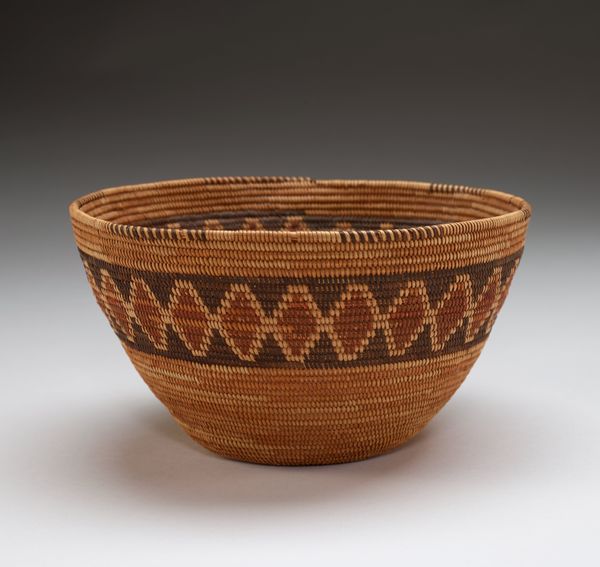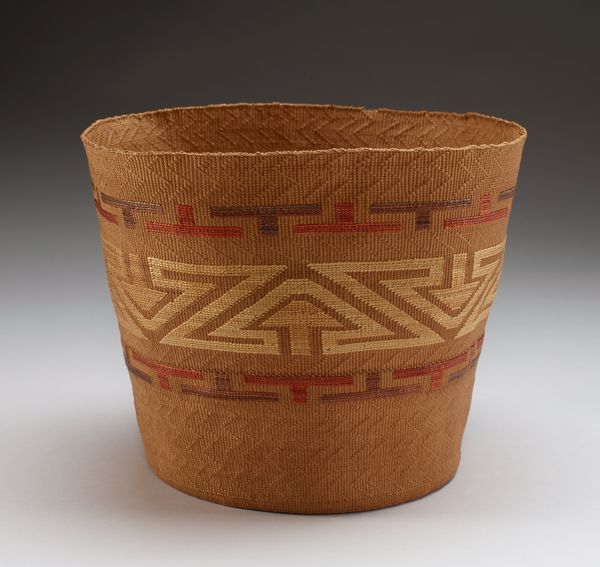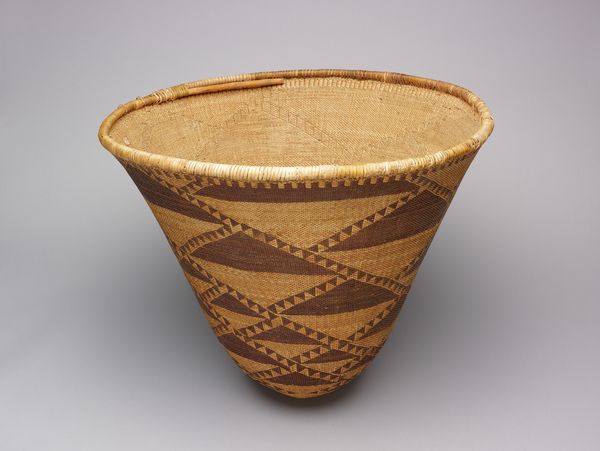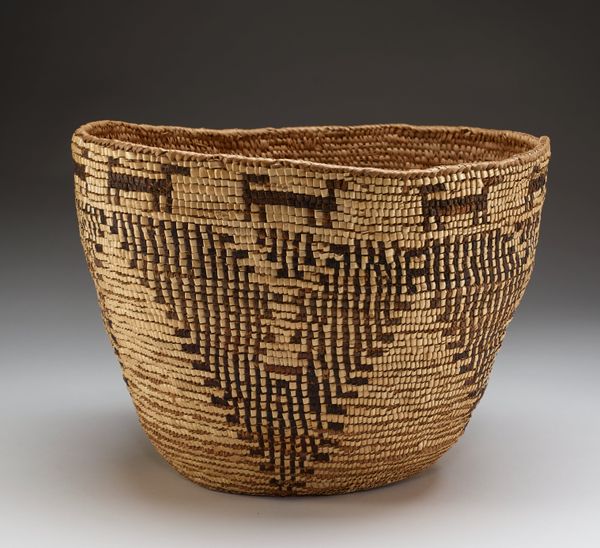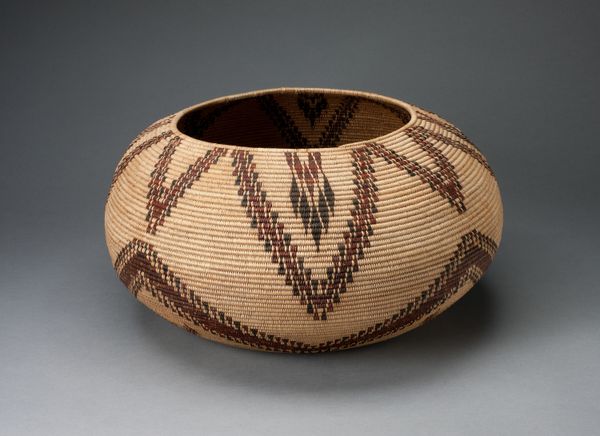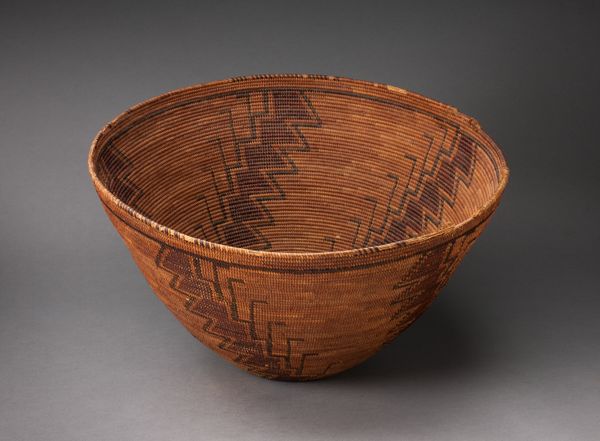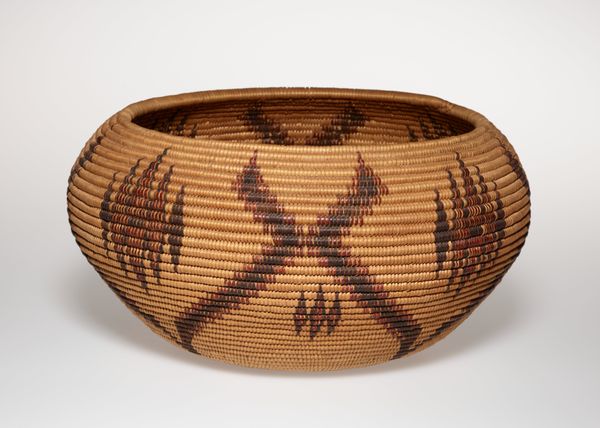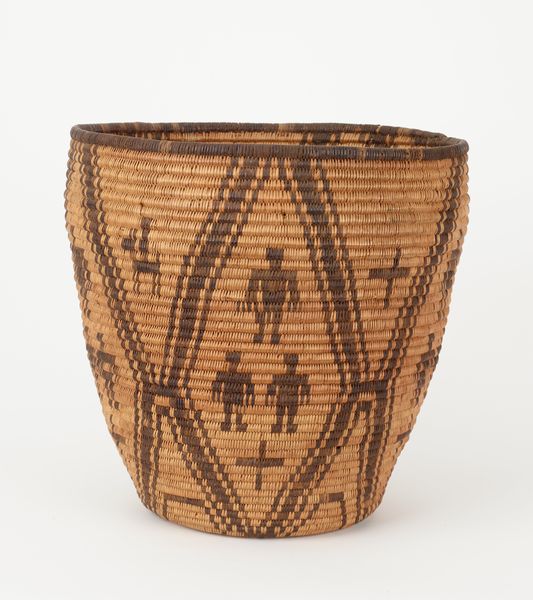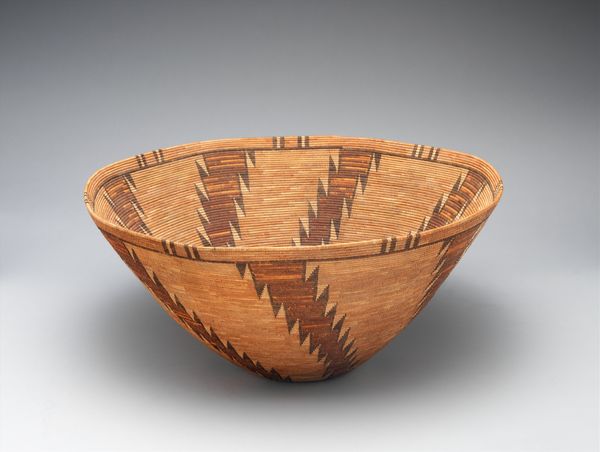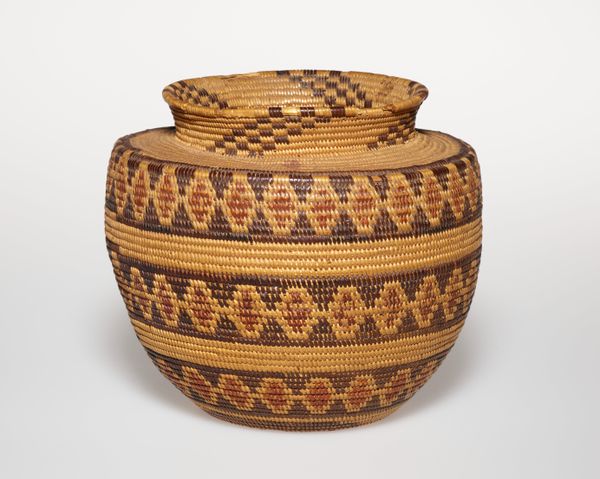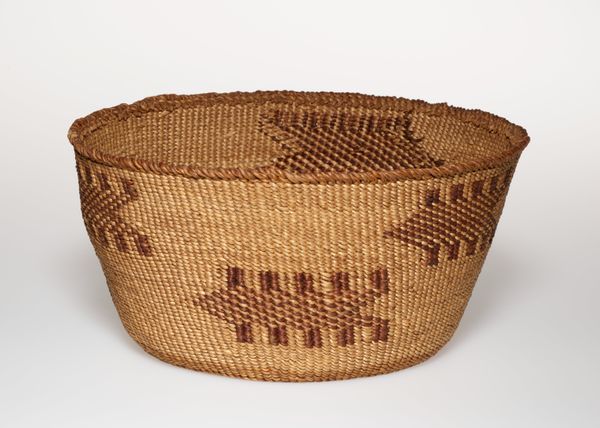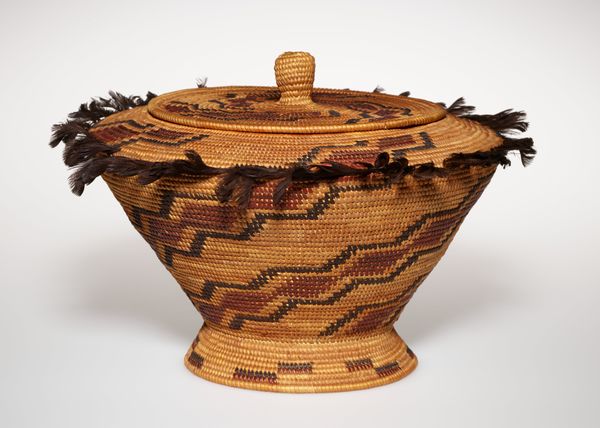
fibre-art, weaving, textile
#
fibre-art
#
pottery
#
weaving
#
textile
#
folk-art
#
geometric
#
ceramic
#
warm palette
#
decorative-art
#
indigenous-americas
Dimensions: 8 11/16 × 13 11/16 × 13 11/16 in. (22.07 × 34.77 × 34.77 cm)
Copyright: Public Domain
Curator: The piece before us is a Maidu basket, crafted sometime between 1900 and 1920. What strikes you most about it? Editor: Oh, its sheer earthiness! It feels so grounded. That subtle, warm palette… It whispers stories of nature. I just want to run my fingers across that texture! It also seems HUGE! I imagine gathering food and whatnot with it. Is it huge? Curator: Size can be deceptive in photos, but its scale reflects both functional and social dimensions inherent in basketry traditions. For the Maidu, based in Northern California, basket weaving wasn't merely craft, but a deeply ingrained aspect of their cultural identity. Editor: So, this is not JUST about storing stuff, is it? Tell me more… Curator: Exactly. Consider the role of women in Maidu society: basketry served as a conduit for passing down ancestral knowledge, techniques, and designs, linking generations. Each geometric motif—those linear patterns circling the basket—holds layers of meaning. Think about how they encode cosmology, social structures, or even personal narratives. Editor: I'm zooming into those geometric shapes—they ARE fascinating. There’s this dark zig-zag pattern, almost like an ancient roadmap, weaving a pathway on a beige-y brown terrain. Makes you think: did the artisan choose these designs deliberately, as little coded messages? Curator: Without a doubt. Though specific interpretations may vary depending on family or community, each element is purposeful. The warm earthy tones themselves speak to the natural materials used: willow, redbud, sedge root, meticulously gathered, prepared, and woven. This basket tells a story of resilience, adaptation, and artistic expression in the face of immense social and political disruption. Editor: It's like holding a piece of living history. Knowing the skill and intention woven into every layer makes it feel much more substantial, and those geometric patterns certainly elevate what otherwise would just be a “basket”. And somehow its imperfection makes it perfect. Curator: Absolutely. It’s a potent reminder that objects contain histories far beyond their apparent form. Editor: Looking at this basket really brought a certain… stillness. A reminder of slower, more deliberate ways. I see the generations, now, like concentric rings within it. Curator: I couldn't agree more. It calls us to think critically about cultural appropriation, the legacy of colonialism, and our responsibility to amplify Indigenous voices in the art world and beyond.
Comments
No comments
Be the first to comment and join the conversation on the ultimate creative platform.
